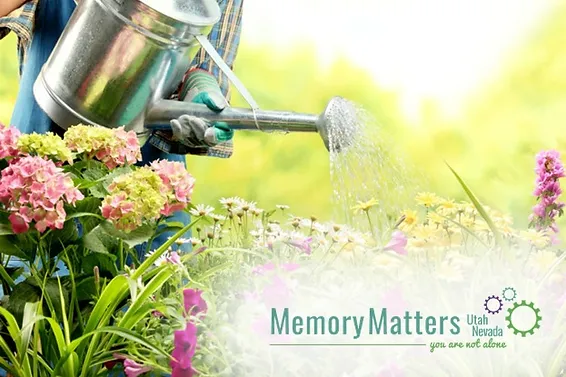Gardening is an excellent way for aging bodies to get a moderate-intensity aerobic workout, shed calories and stay flexible.
At any age, gardening is one of the best activities we can do outdoors. It stimulates all the senses, awakens our connection with nature and with our companions, and rewards us with fresh flowers and nutritious fruits and vegetables. “It’s restorative, even if you have dementia,” says Dee McGuire, a horticultural therapist at Levindale Hebrew Geriatric Center and Hospital in Baltimore, Maryland.
Gardening is also an excellent way for aging bodies to get a moderate-intensity aerobic workout, shed calories and stay flexible, according to a Kansas State University study. That’s one reason why gardening remains popular with Americans well into their golden years.
According to the National Gardening Survey, nearly three-quarters (74 percent) of all American households participated in lawn and garden activities in 2016.
Still, there’s no question that bending, lifting, kneeling, squatting, weeding and pruning—not to mention dealing with the sun, heat and bugs—all become more challenging as we grow older.
Fortunately, there are ways to cope. For example, Bruce Butterfield, former research director of the National Gardening Association, says his mother was able to maintain garden until her death at age 96 by growing flowers in about 70 big pots connected to an automatic irrigation system. “She placed them all around the patio so she could get to them easily using her walker,” he recalls.
It’s all about emphasizing a senior’s abilities and accommodating their limitations. Sometimes a little bit of creativity can go a long way. Try these expert tips to help aging gardeners remain active and involved with their plants.
Tips for Making a Garden or Yard Senior Friendly
- Reassess the yard with the goal of lowering its overall maintenance. Wherever possible, remove lawn and replace it with attractive ground-covers, mulched beds, and paved areas or paths.
- Add comfortable outdoor benches or chairs under shady areas for a convenient place to rest during gardening and a nice spot to sit and admire one’s handiwork.
- Create raised beds to improve drainage and make harvesting easier. Lightweight plastic landscape timbers can be stacked to form raised beds at waist or wheelchair height if necessary. This will minimize bending and straining, which is especially beneficial for seniors with back and joint pain. Be sure to make the beds narrow enough so that anyone can reach into the center of the bed without straining.
- Make vertical gardens by growing vining plants upward using trellises, tomato cages, bamboo stakes, fences, walls or arbors as supports. This is ideal if outdoor space is in short supply, and it can make harvesting easier.
- If possible, change outdoor steps to wide, curving, gently sloping paths. Use pavers or fine gravel to line these paths rather than chunky wood chips or river rocks. Paths should be at least four feet wide to allow walker and wheelchair access and wider at each end so there is ample room for the senior to maneuver and turn around.
- Depending on where you live, installing fencing may be necessary to keep out deer and other pests. Add latches and locks to gates if the gardener has memory problems and is prone to wandering.
- Install an irrigation system to cut down on watering and add low-voltage or solar-powered lighting to improve visibility on footpaths and steps in the evenings.
- Plant in resin or foam-walled containers and use lightweight “soil-less” mixtures to reduce the weight of each planter. To make them even more mobile, put individual pots on casters.
- Avoid hanging baskets, since they dry out quickly, require frequent fertilization and can be difficult to reach.
Tips for Tending to the Senior Gardener
Protection against pests and the elements while gardening is important, too. This applies for both caregivers and seniors. New York dermatologist Arielle Kauvar says gardeners should slather on sunscreen and insect repellents before putting on clothes to ensure no area is overlooked. “And don’t forget to protect your lips,” Dr. Kauvar notes, suggesting a lip balm with an SPF of at least 30.
Use the following tips to ensure you and your elderly loved one have a safe and enjoyable time outside together:
- Work in the mornings and evenings, when the sun is low and it’s coolest outside.
- Bring plenty of water to prevent dehydration.
- Wear sturdy shoes, a broad-brimmed hat, sunglasses and gardening gloves.
- Bend at the knees and hips to avoid injury.
- Move from one activity to another to avoid straining any particular muscle group.
- Paint tool handles in neon colors or wrap them in brightly colored tape so they’re easy to find if dropped.
- If gardening tools are becoming more difficult to grip and wield, try wrapping foam around the handles or sliding foam tubing on them to make them thicker and easier to control.
- Use manual shears instead of power hedge clippers to avoid accidents.
- Look into gardening products specifically designed for seniors, such as kneeling benches, ergonomic tools and rolling scooters that allow for both storage and seating.
- Hire labor or ask younger family members to help do the heaviest lifting, digging and grading.
- If there’s no room for a backyard garden, join or form a community garden. Many communities also have botanical gardens or well-maintained parks that allow a loved one to appreciate the foliage even if they cannot grow their own. A trip to a local garden or home improvement store is also an option.
- If a garden-loving senior experiences limited mobility or becomes bedridden, bring the outdoors inside. Plant a mini-garden in pots on the windowsill or create a maintenance-free terrarium in an old glass or plastic container. Simply having some greenery around will surely lift their spirits.

